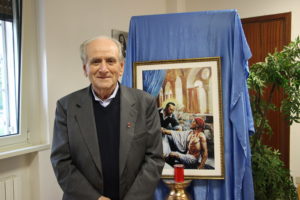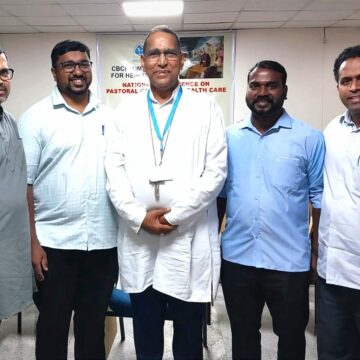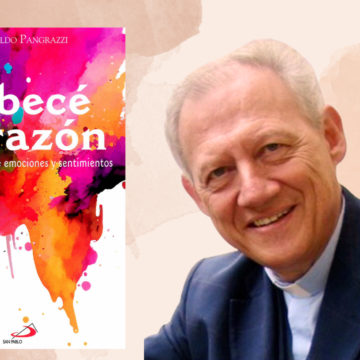Introduction
The prophecy of St. Camillus who predicted the spread throughout the world of the little plant of the Order that he had founded has also been fulfilled as regards the Lay Camillian Family (LCF). Indeed, today the LCF is present in all the continents of the world, multiplying the number of arms stretched out towards those who find themselves going through the difficult season of suffering. The pathway that has led this association to the point at which it is today is very variegated and has been conditioned by numerous factors of a socio-cultural and religious character. My paper does not have the goal of addressing in a detailed way the history of the Lay Camillian Family, which, indeed, has already been the subject of numerous articles, including mine, even though we still do not have a systematic analysis of the history of the LCF. In a necessary reference to its history, I will thus confine myself to referring solely to the events that help us to understand the relationship of this association with the Order of Camillians and the Church.
The Relationship with the Order of Camillians
Father Mario Vanti, the most authoritative historian of our Institute, wrote that within the Order of Camillians an ‘almost congenital’ need has been present to aggregate lay people to the exercise of its apostolic mission. This need was perceived as early as the beginnings of the Institute, as is attested to by the Bull that founded the Order, Illius qui pro gregis , which was emanated in 1591 by Gregory XIV. In this document one can read: ‘The Superior General, and with his authorisation the other Superiors of the local communities, can aggregate and bring together in his own Congregation other secular lay people, clerics and priests to exercise the same works of mercy and charity’.
Not only endowed with a prophetic spirit but also a practical man, St. Camillus did not wait a long time before putting into practice what was granted by this Bull. In a letter to Fr. Biagio Oppertis, in 1592, he wrote: ‘To the glory of the Lord, on All Saints Day we will begin the Congregation of secular men who will be of some utility to the Institute’. To carry out this initiative, he offered a hall and made available to the group a learned and spiritual religious. That during the first years of life of the Order the project to involve lay men in the mission of the Institute was strongly valued, is attested to by the fact that it was placed on the agenda of the second General Chapter which was celebrated in 1599.
Two Observations
These brief references to the emergence and the first steps of an association of lay men instituted by the Order of Camillians and directed towards cooperation in the exercise of works of charity in the world of suffering and health should be completed with two observations.
The period when Camillus reached Rome and began to work in the Hospital of St. James, that is to say the second half of the sixteenth century, was characterised by an extraordinary flourishing of lay associations which were very active and were directed towards expressing their own spirituality by responding to ‘the new forms of poverty of Renaissance society: religious ignorance, the abandonment of minors, the neglect of the poorest sick people’. Camillus breathed in the atmosphere of those lay movements. Indeed, as emerges from a document of 1527, even before founding the Order he enrolled in the Company of St. James of the Incurables and, later, in the Marian Congregation founded by the Jesuits. He himself wanted to form another such group, namely a Company of Pious and Good Men, that is to say of lay men involved in radically changing how sick people were cared for, moving care from the pole of self-interest, which in no uncertain terms Camillus called lust for gain, to the pole of charity.
When the Company of Pious and Good Men became a religious Order, in Camillus his attention paid to lay men, and the role that they could play working with the religious of the Order in providing complete care to the sick, did not disappear. This explains what led him to ask the Holy See to place in the ‘Bull of Foundation’ of the Order the authorisation to aggregate lay men to the Institute that he had founded and then to Institute the Congregation of Secular Men.
When observing this initiative of St. Camillus, we cannot escape a feeling of admiration. This man, whom St. Filippo Neri did not consider capable of founding a Congregation, proved that he possessed to a high degree that spiritual intelligence that enables a person to grasp the signs of the times and implement projects inspired by them.
From the documents on the aggregation of lay men to the Order of the first years of the foundation of the Order of Camillians, it appears clear that such an initiative, promoted at the outset by St. Camillus, was adopted by the Order and therefore entered the programmes that it pursued, as was observed above in the reference to the second General Chapter. This enables us, on the one hand, to affirm that the current Lay Camillian Family has its roots in the project conceived of, and implemented by, St. Camillus, and, on the other, to emphasise the responsibility of the Order for the continuation of this initiative, adapting its relations with it to the socio-cultural and religious changes that have taken place down the centuries.
A Step Ahead in Time
We will now take a step ahead in time and move forward to 1971, the year when the Order of the Camillians in Vienna celebrated its General Chapter. On that occasion, those taking part in the General Chapter also put on their agenda the subject of cooperation with lay people in a way where one can perceive a return to the origins of the Order. It is worthwhile reading anew the text drawn up during that meeting of the General Chapter: ‘Although it remains a fact that to take part fully in the life of the Institute a personal choice is required to follow Christ in the profession of the evangelical counsels and a full and unconditional acceptance of the Camillian mission in the world, we believe that one can expand the circle of the Order into a broader organisation in which the religious would constitute the animating nucleus, welcoming those who feel attracted by our ideal and who work apostolically in the field of health’. Read attentively, these words contain an echo of the words written in the Bull of Foundation of the Order and in the letter of St. Camillus to Fr. Oppertis.
From St. Camillus to the General Chapter of Vienna
If the proposal of the General Chapter of 1971 was to see itself as a connection with the project of St. Camillus, then a question arises: what happened to the Congregations/Associations of the laity during the period that runs from the death of our founder in 1614 to the assembly of Camillians in Vienna? The scarce documentation that exists does not enable us to outline a precise picture of the development of the relationship between Camillian religious and lay people. However the information that has come down to us attests to the existence of a rather fragmentary continuity of associations connected with our Order and also points to some of their characteristics. These associations were connected to a community; they tended to privilege spiritual service for sick people or programmes of prayers for the sick, above all the dying, paralleling the development of the Order which, starting in the seventeenth century, tended to give more importance to the spiritual accompanying of sick people. In their relationship with religious communities, they underwent highs and lows. The historian Fr. Vanti writes that the Superiors commanded them and they were commanded by them. The members of the associations had their preferences and their needs: their preferences about the father sent by the Superiors to preside over them and their needs as regards preferred practices of piety that were often imposed or almost imposed.















Camillians on Facebook
Camillians on Twitter
Camillians on Instagram